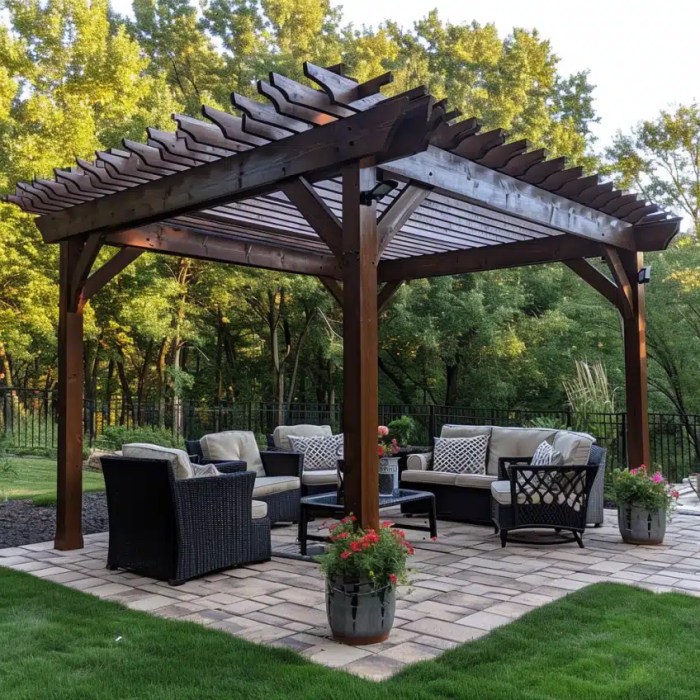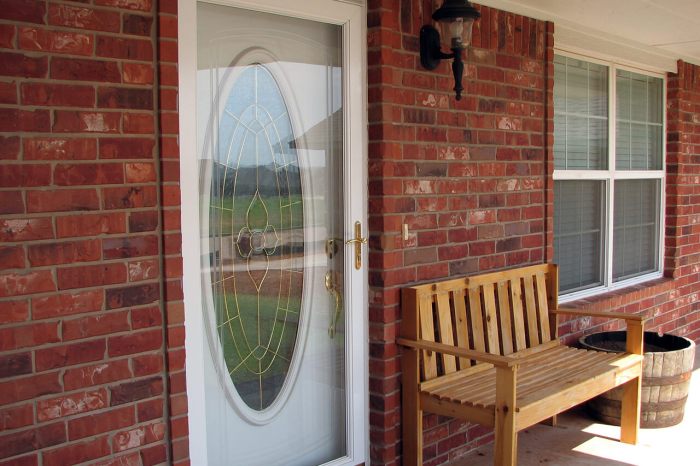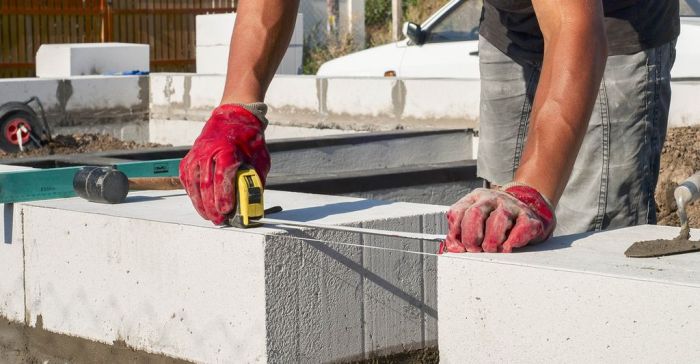Exploring the World of Windows and Doors
Embark on a journey through the realm of windows and doors, where we unravel the intricacies of these essential elements in residential buildings. From the different types to the materials used, this discussion promises to be informative and enlightening.
Delve into the nuances of single-hung and double-hung windows, compare the functionality of sliding doors with French doors, and discover how these choices impact both aesthetics and practicality.
Types of Windows and Doors
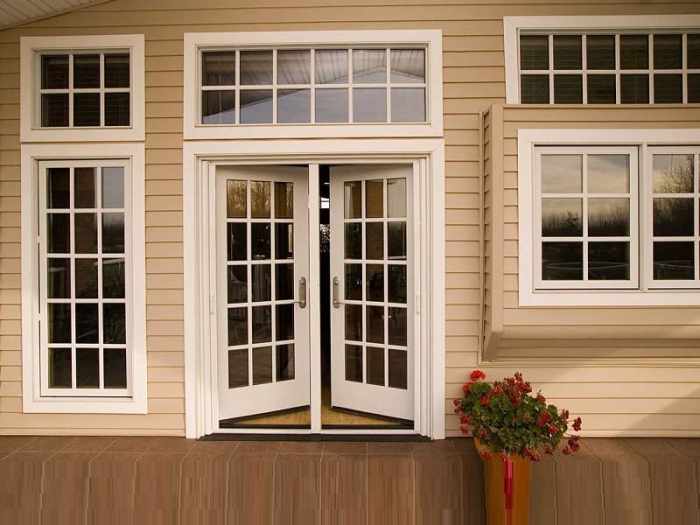
Windows and doors are essential components of residential buildings, providing both functionality and aesthetic appeal. Let's explore some common types used in homes today.
Single-Hung vs. Double-Hung Windows
Single-hung and double-hung windows are two popular choices for residential buildings. The main difference between the two lies in their operation. In a single-hung window, only the bottom sash moves vertically, while the top sash remains fixed. On the other hand, in a double-hung window, both the top and bottom sashes can move up and down independently.
This feature allows for better ventilation control and easier cleaning, making double-hung windows a versatile option for many homeowners.
Sliding Doors vs. French Doors
Sliding doors and French doors are common choices for entryways and patios. Sliding doors consist of two or more large glass panels that slide horizontally along tracks, offering a modern and space-saving design. On the other hand, French doors are hinged and swing in or out, providing a classic and elegant look.
While sliding doors are ideal for maximizing space and natural light, French doors add a touch of sophistication and charm to any room. Both options have their own unique benefits, so the choice ultimately depends on individual preferences and the overall design aesthetic of the home.
Materials Used in Windows and Doors
Wood, vinyl, aluminum, and fiberglass are common materials used in the construction of windows and doors. Each material has its own advantages and disadvantages in terms of durability and maintenance, as well as its impact on energy efficiency in homes.
Wood
Wood is a popular choice for windows and doors due to its natural beauty and traditional appeal. It offers good insulation properties, but it requires regular maintenance such as painting or staining to prevent rotting and warping. Wood is susceptible to moisture damage, making it less durable in humid climates.
Vinyl
Vinyl windows and doors are known for their low maintenance requirements and affordability. They are durable, resistant to moisture, and do not need painting. However, vinyl may not be as aesthetically pleasing as wood or other materials. It is also less environmentally friendly due to its production process.
Aluminum
Aluminum is a lightweight and strong material commonly used in modern window and door construction. It is low maintenance, resistant to corrosion, and can be easily recycled. However, aluminum is a poor insulator and may contribute to energy loss through windows and doors, impacting the overall energy efficiency of a home.
Fiberglass
Fiberglass windows and doors are highly durable, low maintenance, and offer excellent insulation properties. They are resistant to warping, rotting, and swelling, making them suitable for various climates. Fiberglass is also environmentally friendly and can contribute to better energy efficiency in homes compared to other materials.
Window and Door Installation
Installing a new window or door in a residential setting involves several steps, specific tools and equipment, and may come with its own set of challenges.
Steps Involved in Window and Door Installation
- Measurements: Accurate measurements of the window or door opening are crucial to ensure a proper fit.
- Preparation: Remove the old window or door, clean the opening, and prepare it for the new installation.
- Installation: Place the new window or door in the opening, secure it in place, and make necessary adjustments.
- Insulation: Properly insulate around the window or door to prevent drafts and improve energy efficiency.
- Finishing: Add trim, caulk, and paint to complete the installation and provide a polished look.
Tools and Equipment Required
- Tape measure
- Level
- Screwdriver
- Hammer
- Caulk gun
- Saw (for cutting trim or shims)
- Insulation materials
Common Challenges and Solutions
- Uneven openings: If the window or door opening is not level, use shims to adjust and ensure a proper fit.
- Sealing gaps: Properly seal any gaps between the window or door and the wall to prevent air leaks and water infiltration.
- Improper insulation: Use insulation materials to fill in gaps and ensure energy efficiency.
- Difficult hardware installation: Follow manufacturer instructions carefully to install hardware correctly.
Energy Efficiency and Insulation
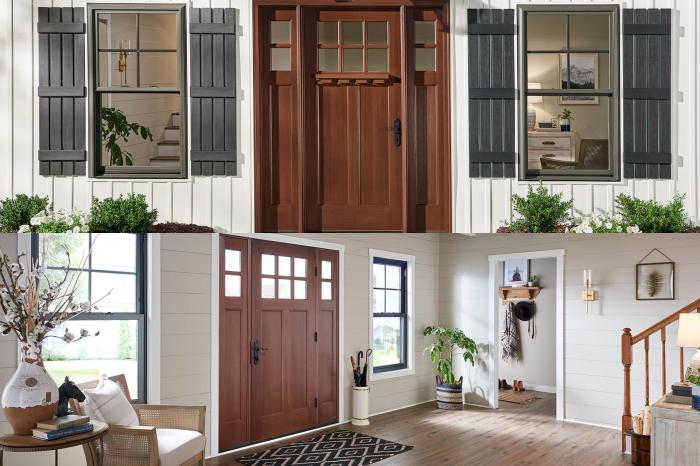
Energy-efficient windows and doors play a crucial role in reducing heating and cooling costs in homes. By improving insulation and minimizing energy loss, they help maintain a comfortable indoor temperature while reducing the need for excessive heating or cooling.
Importance of Energy-Efficient Windows and Doors
One of the key ways to enhance energy efficiency in a home is through the installation of energy-efficient windows and doors. These specially designed windows and doors help to prevent heat transfer, keeping the desired temperature inside the house stable.
This, in turn, reduces the workload on heating and cooling systems, leading to lower energy bills and a more sustainable home environment.
Ways to Improve Insulation of Windows and Doors
- Consider double or triple-pane windows with low-emissivity (low-E) coatings to reduce heat transfer.
- Upgrade weatherstripping and caulking around windows and doors to prevent air leaks.
- Install window treatments like curtains, blinds, or shades to provide an additional layer of insulation.
- Add storm windows or doors for extra protection against the elements.
Tips for Selecting Energy-Efficient Windows and Doors
- Choose windows and doors with high energy performance ratings, such as ENERGY STAR certification.
- Consider the climate zone you live in when selecting windows and doors - different zones have varying energy efficiency requirements.
- Opt for materials like fiberglass, vinyl, or wood-clad windows and doors that offer good insulation properties.
- Consult with a professional to ensure proper installation for maximum energy efficiency benefits.
Ultimate Conclusion
As we conclude our exploration of windows and doors, we reflect on the crucial role they play in energy efficiency and insulation. From installation challenges to material choices, this discussion sheds light on key aspects that homeowners need to consider.
FAQ Overview
What are the advantages of fiberglass as a material for windows and doors?
Fiberglass is highly durable, weather-resistant, and requires minimal maintenance compared to other materials like wood or aluminum.
How can homeowners improve the insulation of their existing windows and doors?
Adding weather-stripping, caulking gaps, and using thermal curtains are effective ways to enhance insulation and reduce energy loss.
What tools are essential for a window or door installation project?
Common tools include a level, screwdriver, hammer, tape measure, and caulking gun, among others, to ensure a successful installation.
